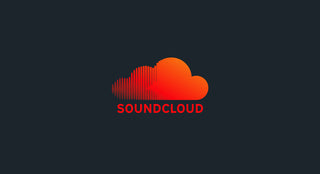Since its origin, SoundCloud has been the dominant social platform that truly has its ears to the streets for music. As Spotify, YouTube, and Apple Music are the main heavy hitters for streaming, SoundCloud is able to hit a niche market of over 175 million and growing listeners, who are at ground zero when it comes to discovering cutting edge music on the brink of blowing up. The interactive component where users can share feedback and repost their favorite artist’s music puts SoundCloud right in the sweet spot between Twitter and Spotify. This is the most appealing aspect because the rapid fire pace of releasing new content is second to none. The streaming service’s direct to consumer approach puts the listener and community at the forefront, able to co-sign new music before the hype—often generating the buzz that propels an artist to mass appeal. SoundCloud has become a space where music producers, performers, and listeners are equal, and everybody’s involvement is a crucial component to keep the ball rolling.
That being said, financially, SoundCloud is about 44 million in the hole. According to 2014 financial reports, SoundCloud lost that amount while only generating a fraction of it at 15 million, which shows that the streaming platform’s efforts are not turning into profit, only credibility. As SoundCloud merged with Universal Music Group, which resolved previous licensing issues, they began to strategize different ways to advertise and generate revenue for themselves, as well as their artists. For listeners, that means that the UMG roster is fully accessible for streaming, and because they now have the platform to prioritize and advertise their content, it may make it more difficult for independent artists to be found. The key word here is advertise, which already gives you an idea of where this streaming platform is headed. This is also discouraging because artists have long been verbal about how difficult it is to be appropriately compensated for their music. But, perhaps a merger with “The Man” means artists will have an easier time getting that check. We can at least hope that the saturation of SoundCloud by UMG’s library and roster will not turn into those annoying ads that apologize for interrupting your stream.

The balance between mass appeal and the DIY niche market that SoundCloud has cornered will be a tough one to manage. If you were to personify SoundCloud, Spotify, and TIDAL, it would be like a showdown between Gucci Mane, the Drake and Future duo, and Kanye West; These artists each represent completely different facets of the communal music scene. DIY, versus commercial, versus exclusive. Gucci Mane’s rags to riches story from the ATL rap scene—which has been ground zero for up and coming music—has not only influenced, but set the bar for DIY, similar to SoundCloud. Future has taken every step into becoming the most accessible trap artist in music by teaming up with Drake—who is the most streamed artist on Spotify—by collaborating on the September 2015 release What a Time to be Alive, as well as producing great marketing schemes such as Future’s recent FutureEmoji. Future and Drake encompass why Spotify is lit with mainstream appeal, because these two individuals are streamed primarily through this platform. And then there’s Kanye West, who draws parallels to TIDAL, with its drive to place artists in more control of their releases and revenue. TIDAL, which has exclusive rights to stream Kanye’s latest The Life of Pablo, has doubled the number of subscribers from 1 million to 2.5 million since TLOP’s release. TIDAL seems to have their hands in all aspects of music including exclusive releases, music discovery, music sharing, new interface, and features—which may be where their downfall lies by having way too many options. Similar to Kanye who is arguably trying to be a cultural phenomenon, musician, and fashion icon, it’s tough to say how much more ground TIDAL and Mr. West can cover without becoming the Walmart of media, where quantity does not equate to quality.
With new stations, new partnerships, and new ways to generate listeners as well as income, SoundCloud doesn’t have to head to the hills quite yet. SoundCloud still reaches 25% of the US mobile population showing that its popularity can only become more accessible. Of that 25%, SoundCloud reaches 82 million listeners in the US and 175 million listeners globally. These figures show the possibility for the company’s ability to grow through monetization, if they can find a way that works with its community. The problem is that no one wants to deal with advertisements, or the hassle of paying for multiple streaming service subscriptions. Spotify, which has had about 20 million paying subscribers since June 2015, shows its monetary success with its subscribers’ daily use. Apple Music has topped 10 million subscribers, which is not far behind Spotify, considering it has only been available for 8 months. SoundCloud has some catching up to do with premium streaming because Apple Music and Spotify already have a strong hold on paying subscribers. Since paying for content may be out of reach, SoundCloud’s future may depend on its socially-driven community, which has always been the most unique aspect of its interface. Unfortunately, we are experiencing SoundCloud after the hype—we might be simultaneously witnessing that downfall of the dopest way to discover new music.
***

